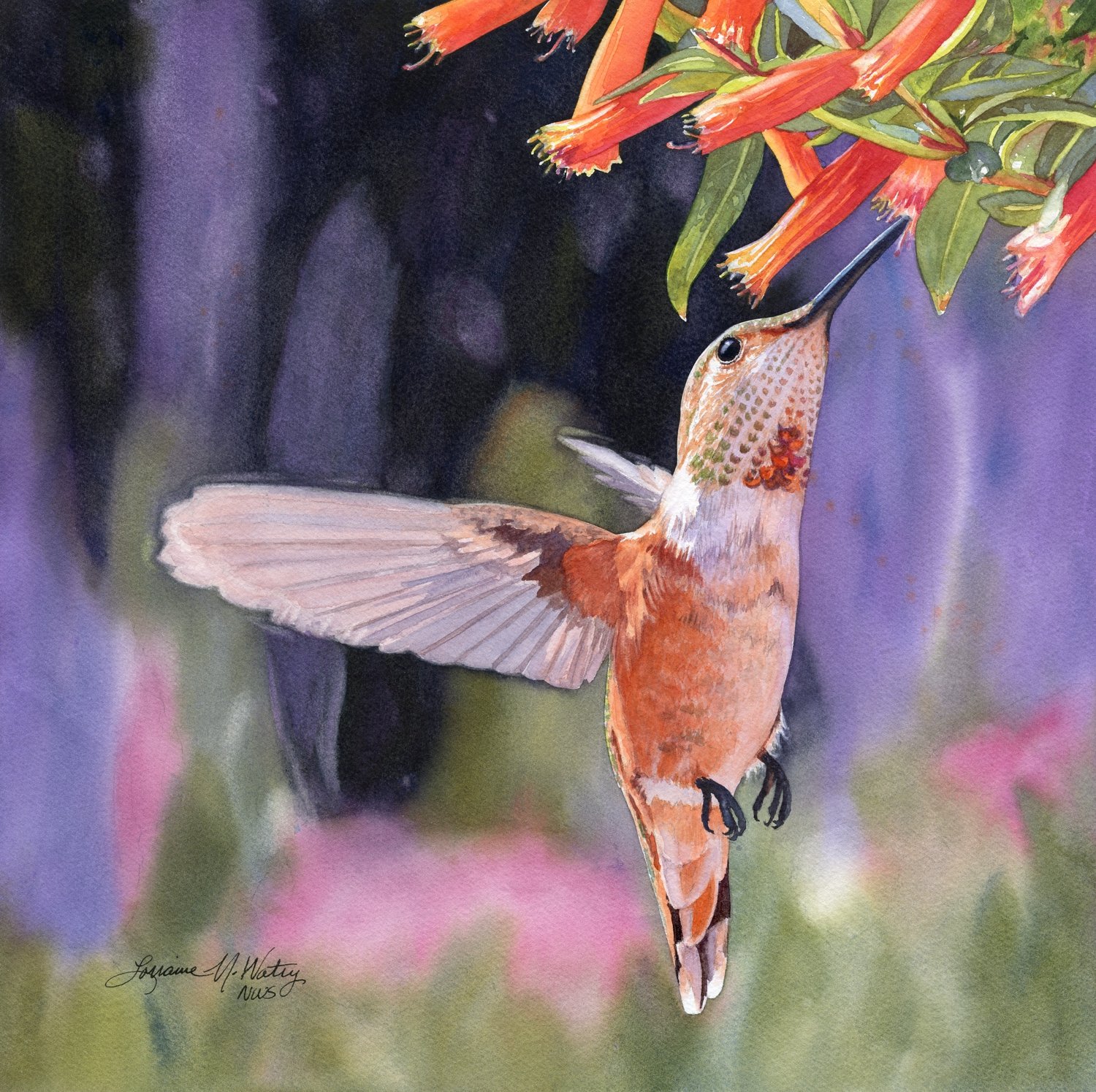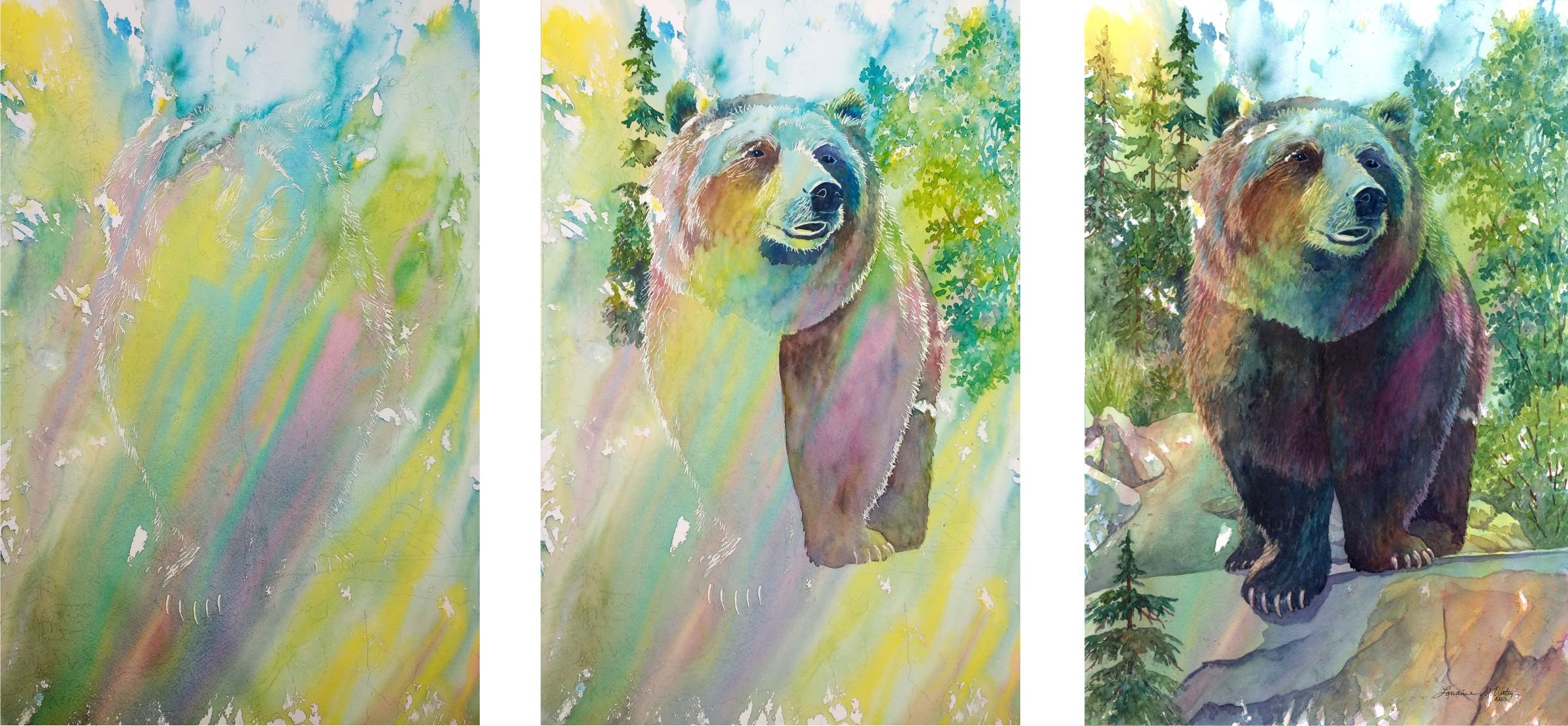Flight of Fancy by Lorraine Watry
Your Painting’s Background
One would think the important part of the painting is your main subject and it is, but there are supporting actors in every scene that are also very important. Those supporting actors might include: the background, smaller shapes and/or negative space.
Why you should think about the painting’s background before you start.
You see an exciting subject: a bird, a piece of glass, a flower, and you can't wait to jump in and start the painting. Before starting your painting, do you take the time to work out where your main subject is going to reside in the space on your painting? Will this subject have a fully integrated background that gives depth, adds atmosphere and possibly tells more of the story, will it be silhouetted, or a mix of the two?
Imagine the Mona Lisa without the ethereal landscape behind her. Her story would lose some of its complexity. If it were just a black or single-color background, she might not hold our attention the same way. Now imagine a beautiful botanic flower illustration. If the flower was placed against a busy scene of other flowers or in some colorful setting, it might get lost and the scientific feeling of realism might be lost.
Here are three examples of paintings where I started with the background.
The time to think about the area surrounding your subject is before you begin the painting. Planning a watercolor can make a difference because you may already have the solution to possible problems.
Three of the steps for my watercolor - “Bamboo and Lilies”
Example 1: In this painting, Bamboo and Lilies (above), I started with the waterlilies and lily pads masked so that I could paint the detailed background reflections in the water. By masking these areas, I did not have to be careful to paint around them and I could focus on painting the wet-on-wet background.
Three of the steps for my watercolor - “Dueling Pintails”
Example 2: In “Dueling Pintails” (above), I started with the water again and masked the birds. By painting the water first, I get a large area of the white of the paper covered with paint and that helps judge the values of my main subjects. I don’t always finish the background before I start the main subject, though.
Three of the steps for my watercolor - “Rainbow Grizzly”
Example 3: In the final example, “Rainbow Grizzly” (above), the background and main subject were painted virtually at the same time. This painting was started with a single-pour background. Once the first layer was dry I used painted on top of that. My plan from the beginning was to allow some of that first layer or background color to show though some of the areas of the bear. So, starting with the background in this case guided me on what colors to paint the bear with.
How often do I paint the background first?
If you asked me what I paint first in the majority of my paintings I would say the background. However, the background doesn't have to come first as long as you have thought about your process and included the background in the planning. If you try to place your main subject in a background after-the-fact it will often feel out of place.
You've found a great subject. Now plan the background. Your background may already be a part of your reference.
Do the values and shapes in the background work?
Do you want to change the color or lighting, or the look of an element (sky, water, wallpaper, etc.)?
If you are going to paint the subject as a silhouette do the negative shapes (white of the paper) have variety?
Do you want to start in the background or work it into the painting as you go?
Lastly, if making major changes, paint a small color study to try out your changes prior to jumping into the painting.
To conclude, take the time to think about the background before jumping into the painting. I think you will thank yourself!




